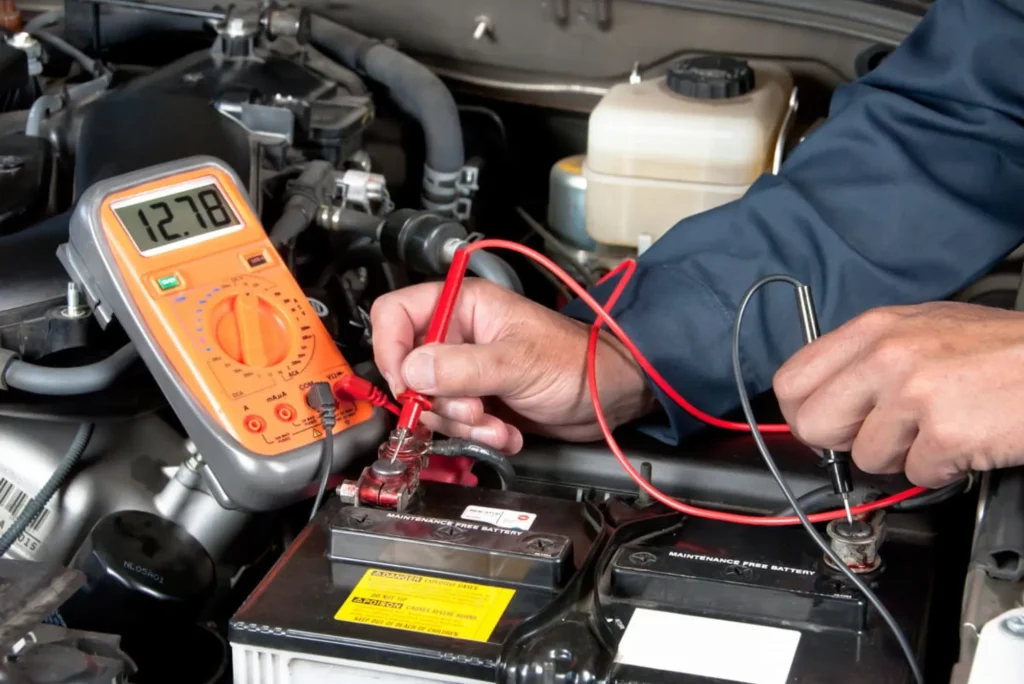Car Electronic Repairs: Ensuring Optimal Performance for Your Vehicle
In today’s modern vehicles, electronic systems play a crucial role in ensuring optimal performance, safety, and comfort. From advanced engine management systems to sophisticated infotainment setups, cars rely heavily on intricate electronic components to function efficiently. However, like any other mechanical system, these electronics are prone to malfunctions and issues over time.
In this comprehensive guide, we will delve into the world of car electronic repairs, exploring the importance of maintaining these systems, identifying common issues, and understanding the repair process. Whether you’re experiencing dashboard warning lights, erratic behavior from your vehicle’s electronics, or simply seeking preventive maintenance, this article aims to provide valuable insights into addressing electronic problems in your car.
Understanding the Importance of Electronics in Cars
Modern vehicles are equipped with a wide array of electronic systems designed to enhance performance, improve fuel efficiency, and ensure safety. These systems include:
Engine control units (ECUs) that regulate fuel injection, ignition timing, and other vital engine functions.
Anti-lock braking systems (ABS) and electronic stability control (ESC) systems that enhance braking performance and vehicle stability.
Infotainment systems that provide navigation, entertainment, and connectivity features.
Advanced driver assistance systems (ADAS) such as adaptive cruise control, lane departure warning, and collision avoidance systems.
These electronic systems work in tandem to deliver a seamless driving experience. However, when one or more of these systems malfunction, it can lead to various issues ranging from decreased performance to safety concerns.
Common Car Electronic Issues and Their Impact
Despite advancements in automotive technology, car electronics are susceptible to a range of issues. Some of the most common electronic problems encountered by vehicle owners include:
Check engine light: A persistent check engine light can indicate a wide range of issues, from minor sensor malfunctions to more serious engine problems.
Electrical system faults: Problems with the electrical system can manifest in various ways, such as dimming headlights, flickering dashboard lights, or intermittent power loss.
Infotainment system glitches: Issues with the infotainment system may include unresponsive touchscreens, malfunctioning navigation systems, or audio playback problems.
Sensor malfunctions: Malfunctioning sensors can lead to inaccurate readings and trigger warning lights for systems such as ABS, traction control, and tire pressure monitoring.
Battery-related issues: Problems with the battery, alternator, or charging system can result in starting difficulties, dimming interior lights, or electrical component failures.
These electronic issues not only affect the performance and functionality of the vehicle but also compromise safety and comfort on the road. It’s essential to address these problems promptly to prevent further damage and ensure a reliable driving experience.
Diagnosing Electronic Malfunctions
Diagnosing electronic malfunctions in modern vehicles requires specialized knowledge, diagnostic tools, and expertise. Automotive technicians utilize a variety of diagnostic techniques to identify and address electronic issues accurately. These may include:
On-board diagnostics (OBD): Most modern vehicles are equipped with onboard diagnostic systems that monitor the performance of various vehicle components. Automotive technicians use OBD scanners to retrieve diagnostic trouble codes (DTCs) and pinpoint the source of electronic malfunctions.
Electrical testing: Technicians perform electrical tests to measure voltage, current, and resistance at various points in the vehicle’s electrical system. This helps identify faulty components, wiring issues, and electrical shorts.
Component testing: Automotive technicians use specialized tools and equipment to test individual electronic components such as sensors, actuators, relays, and control modules. This allows them to determine whether a component is functioning correctly or needs replacement.
By utilizing these diagnostic techniques, automotive technicians can accurately identify electronic malfunctions and recommend the necessary repairs or replacements.
Electronics Repair Shop Near Me – Finding the Right Service
When faced with electronic issues in your vehicle, finding a reliable and reputable electronics repair shop is crucial. Here are some key factors to consider when searching for a service provider:
Reputation and experience: Look for a repair shop with a proven track record of providing high-quality electronic repair services. Check online reviews, ask for recommendations from friends or family, and inquire about the shop’s experience with your specific make and model of vehicle.
Certifications and credentials: Choose a repair shop that employs certified technicians with the necessary training and credentials to work on your vehicle’s electronic systems. Certifications from organizations such as the National Institute for Automotive Service Excellence (ASE) indicate a technician’s expertise in electronic diagnostics and repairs.
Diagnostic capabilities: Ensure that the repair shop has access to the latest diagnostic tools and equipment needed to diagnose electronic issues accurately. This includes OBD scanners, oscilloscopes, multimeters, and other specialized tools.
Warranty and guarantee: Inquire about the warranty and guarantee offered by the repair shop on parts and labor. A reputable repair shop should stand behind their work and offer a warranty on repairs for added peace of mind.
By considering these factors, you can select a reliable electronics repair shop that meets your needs and ensures quality service for your vehicle.
The Repair Process Demystified
Once you’ve chosen an electronics repair shop, the repair process typically follows these steps:
Initial assessment: The technician conducts a thorough inspection of the vehicle’s electronic systems to identify the source of the problem. This may involve retrieving diagnostic trouble codes (DTCs), performing electrical tests, and conducting visual inspections of components.
Diagnosis: Based on the initial assessment, the technician diagnoses the electronic issue and determines the necessary repairs or replacements. This may involve replacing faulty sensors, repairing wiring harnesses, or reprogramming control modules.
Repair or replacement: Once the diagnosis is complete, the technician performs the necessary repairs or replacements to address the electronic issue. This may involve replacing damaged components, repairing wiring, or reprogramming control modules using specialized diagnostic tools and equipment.
Quality assurance: After completing the repairs, the technician conducts thorough testing to ensure that the electronic systems are functioning correctly. This may involve performing functional tests, verifying sensor readings, and conducting road tests to confirm proper operation.
Final inspection: Once the repairs are complete and the electronic systems are functioning as intended, the technician performs a final inspection to ensure that everything is in order. This includes checking for proper connections, verifying that warning lights are no longer illuminated, and confirming that all electronic functions are working correctly.
By following these steps, automotive technicians can effectively diagnose and repair electronic issues, ensuring that your vehicle’s electronic systems perform optimally.
Cutting-Edge Tools and Techniques
The field of car electronic repairs has evolved significantly in recent years, thanks to advancements in diagnostic tools and repair techniques. Automotive technicians now have access to a wide range of cutting-edge tools and equipment that facilitate faster, more accurate diagnostics and repairs. Some of the advanced tools and techniques used in car electronic repairs include:
Oscilloscopes: Oscilloscopes are electronic test instruments used to measure and display voltage signals in real-time. Automotive technicians use oscilloscopes to diagnose electronic issues such as sensor malfunctions, ignition system problems, and communication bus faults.
Diagnostic scanners: Diagnostic scanners are handheld devices used to retrieve diagnostic trouble codes (DTCs) from a vehicle’s onboard computer systems. These scanners allow technicians to quickly identify electronic issues and access manufacturer-specific diagnostic information for more accurate diagnoses.
Programming tools: Many modern vehicles rely on electronic control modules (ECMs) and other programmable components to regulate various vehicle functions. Automotive technicians use programming tools to update software, reflash control modules, and perform other








